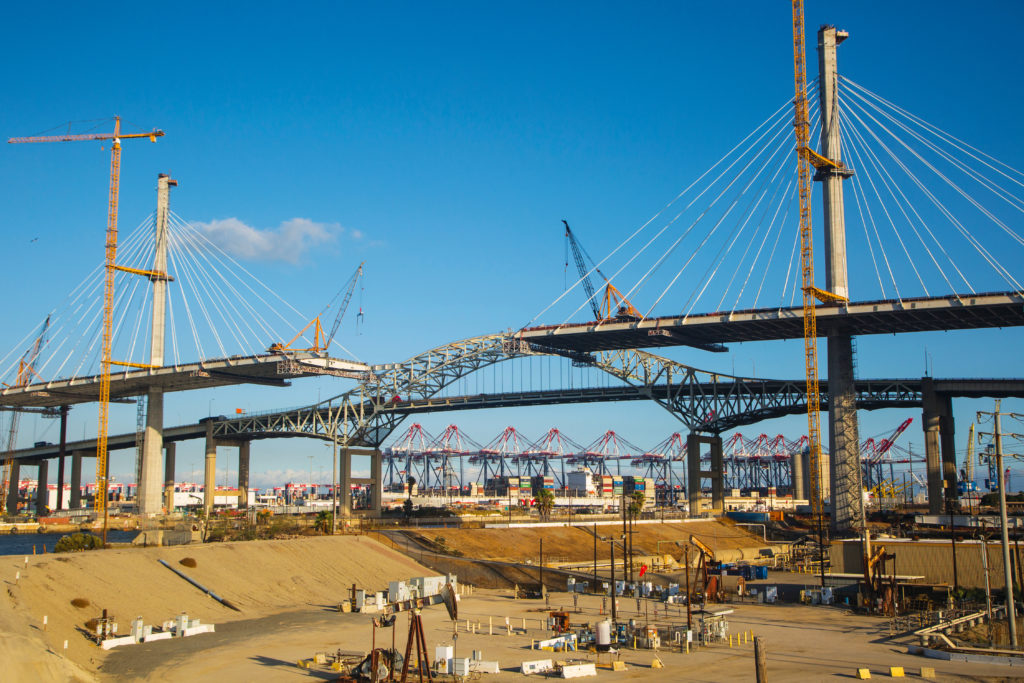In mid-2020, the new cable-stayed bridge spanning the Long Beach harbor will open to vehicular and pedestrian traffic. The $1.467 billion replacement for the existing Gerald Desmond Bridge will create a new icon for Long Beach’s skyline, improve the transit experience for port truckers and commuters alike, and provide a new vantage point for cyclists and pedestrians seeking views of the San Pedro Bay ports.

The massive project spearheaded by the Port of Long Beach has been nearly two decades in the making, according to Duane Kenagy, capital programs executive for the Port of Long Beach. “This was a major undertaking, and obviously there are a lot of people who have been involved,” Kenagy said, noting that the project created thousands of construction jobs. “There will be appropriate dedication efforts to recognize the contributions of all of the folks who worked hard to get this thing built and added to the community,” he said, adding that he expects the bridge to open next summer.
“We had several objectives in designing a replacement bridge, and one of the major things is simply roadway safety,” Kenagy said of the new structure. “The new bridge will have three continuous lanes all the way across [in each direction] with safety shoulders on both sides. So if there is an incident on the bridge, it’ll be a lot easier for emergency response to address that.”
Additionally, the new bridge is less steep than the existing structure, which makes the roadway safer for the many truckers carrying goods to and from the ports, as well as the vehicles around them, Kenagy explained. “You won’t see the tremendous speed difference that we see today between loaded trucks trying to go up those 6% [steep] grades with cars that are [often] racing to get across the bridge.”
In addition to improving the transit experience for motorists, the bridge will feature an added benefit for the community: the Mark Bixby Memorial Bicycle Pedestrian Path. “The project includes a full Class 1 bike lane, which means it’s fully separated from roadway traffic for the entire length of the bridge,” Kenagy said. “It will have a four-foot [wide] bike lane in each direction and a four-foot [wide] separate area for pedestrians.” The highest point of the bridge will feature a lookout point for travelers along the path.
Kenagy noted that the City of Long Beach is working to ensure that downtown’s network of bicycle lanes is connected to the bridge’s path.
The towers of the bridge are 515 feet tall – the highest structures in the city. “It’s a beautiful bridge by any standard for bridge architecture. The graceful lines of the bridge I think complement the skyline in the area, [and] that certainly towers above everything down in the port,” Kenagy observed. He speculated that the bridge will become a new mainstay in artistic renderings of the city skyline.
“We’re building a facility that will well serve Long Beach and the community for decades and decades to come,” Kenagy said of the bridge. “It’s got a 100-year design life, and I think it’s just going to be a tremendous addition to the City of Long Beach.”
